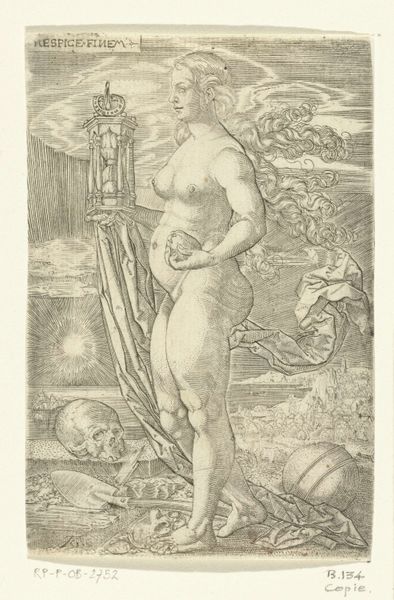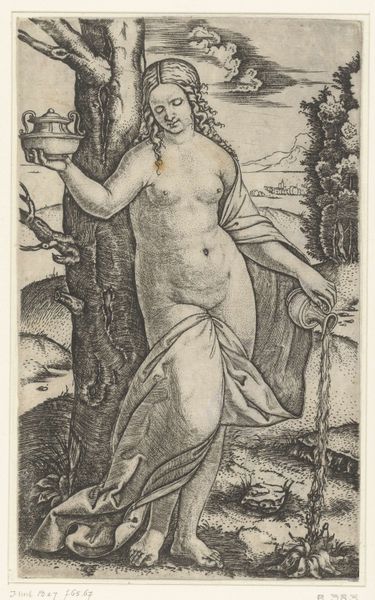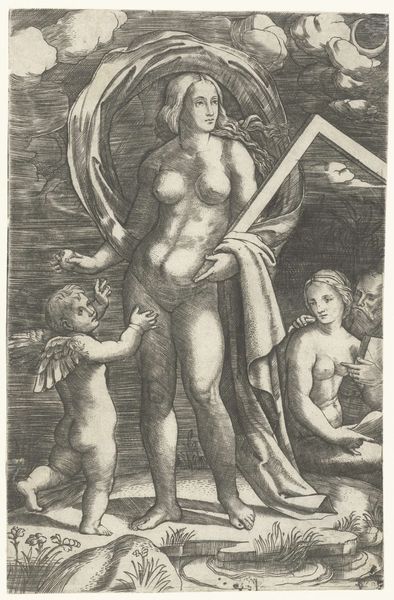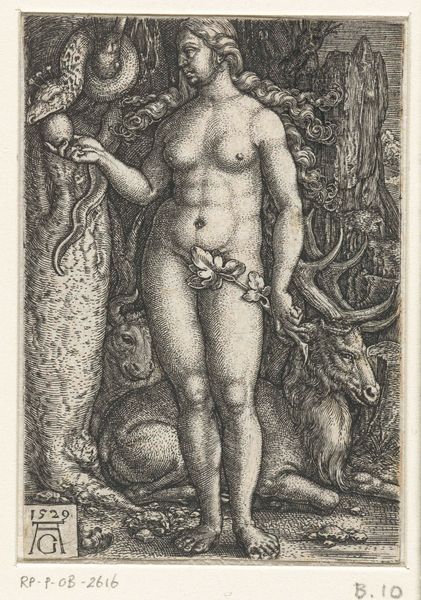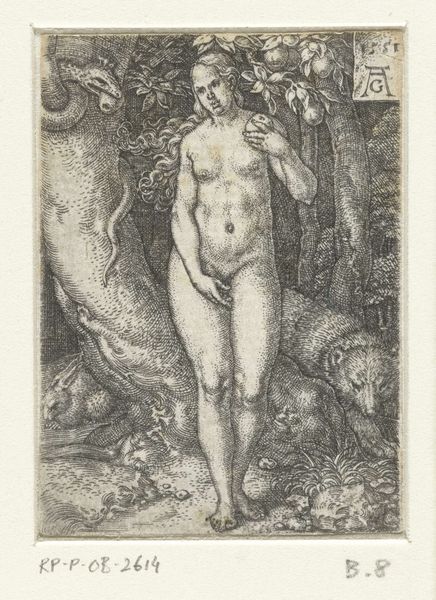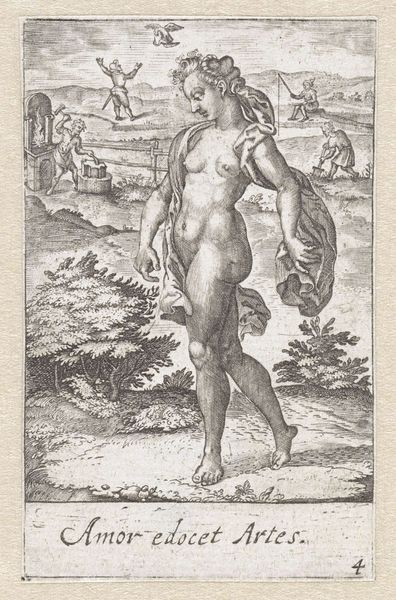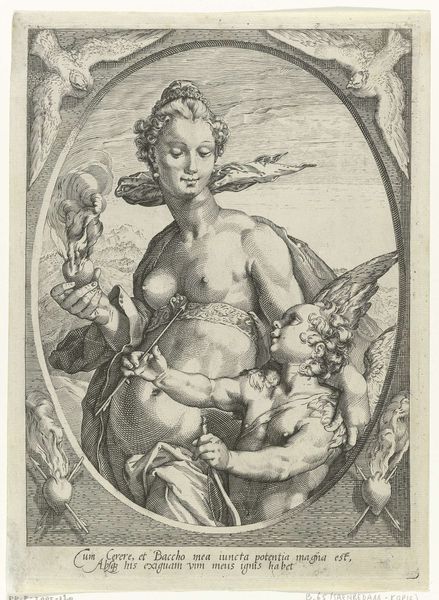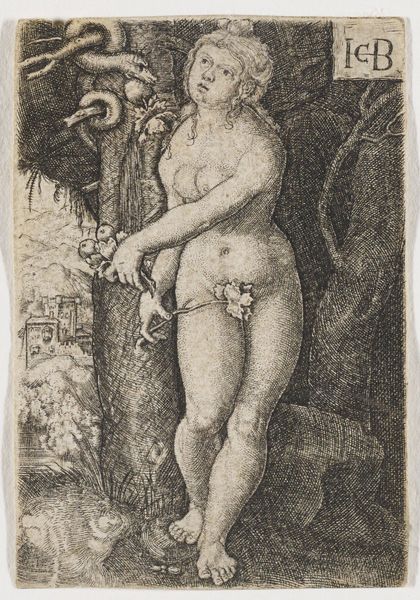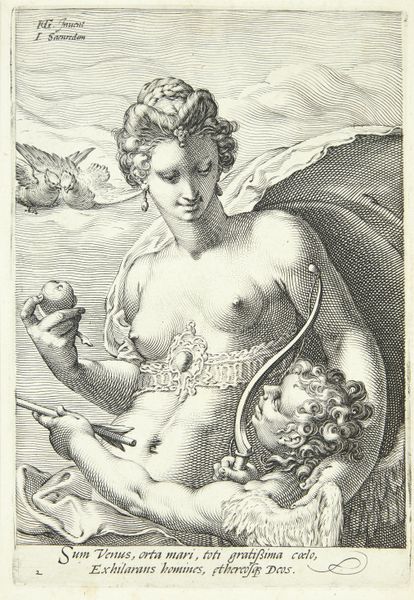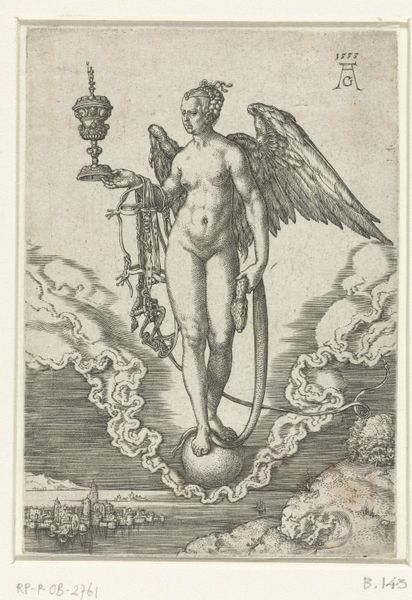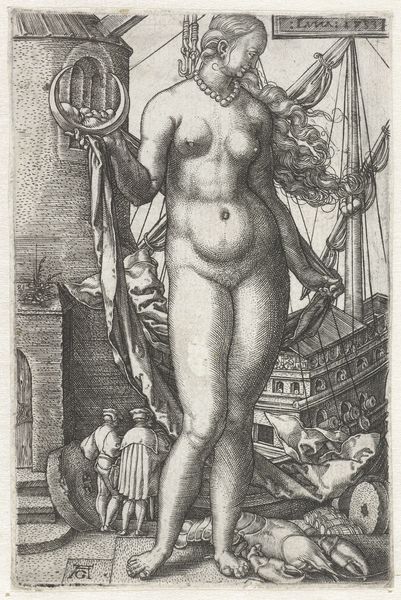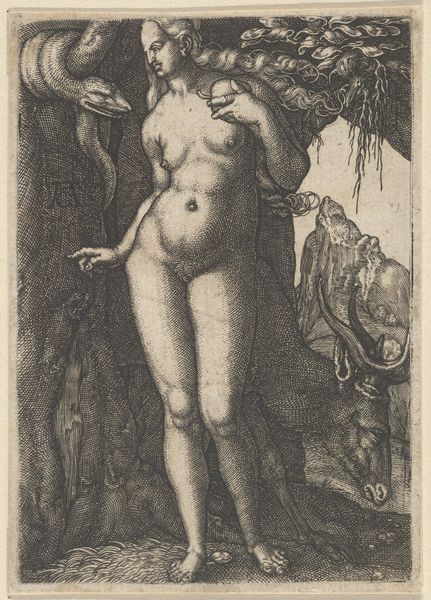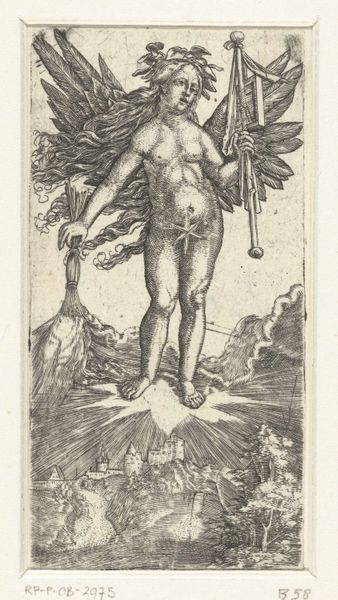
print, engraving
#
allegory
# print
#
old engraving style
#
mannerism
#
figuration
#
vanitas
#
momento-mori
#
northern-renaissance
#
nude
#
engraving
Dimensions: height 114 mm, width 75 mm
Copyright: Rijks Museum: Open Domain
Editor: This is Heinrich Aldegrever’s “Vergankelijkheid,” made in 1529. It's an engraving, a print. It strikes me as intensely…brooding. All that detail hinting at something beyond the surface. What story do you think Aldegrever is trying to tell? Curator: Oh, absolutely brooding! To me, Aldegrever is whispering secrets about time and beauty, all etched in the cool detachment of line. Don't you find it wonderfully unsettling? The Northern Renaissance artists loved a bit of moralizing, and this print fits right in with that penchant. She's beautiful but she's carrying the hourglass, isn't she? And is that a skull at her feet? Editor: Definitely a skull…a couple, actually! And that hourglass looks rather ominous perched on its stand, draped like that. It seems to be balanced out with a ripe fruit held in the woman's hand. Curator: Exactly! It’s like a delicate see-saw, isn’t it? Beauty versus decay, the fleeting present versus the inevitable. Everything turns to dust. "Memento mori," they used to say, "remember you must die". Look at how her flesh is rendered, the way she meets our gaze. What does that gaze tell you? Editor: A sort of resignation, perhaps? She seems less defiant and more accepting of the transient nature of life. Maybe she is embracing the memento mori, not fearing it. Curator: I think so too. I always find this kind of work rewarding for precisely that reason. By contemplating the "Vergankelijkheid," or transience, perhaps we are gifted the rare chance to appreciate life a bit better. Editor: Yes! I hadn’t considered it that way. A powerful message masked in what first appears to be a somber meditation. Curator: Isn't it marvelous when art surprises you?
Comments
No comments
Be the first to comment and join the conversation on the ultimate creative platform.
